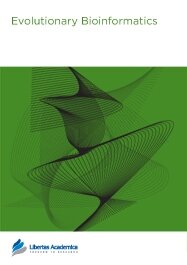

Publication Date: 10 May 2011
Type: Original Research
Journal: Evolutionary Bioinformatics
doi: 10.4137/EBO.S6662

The increasing availability of high throughput sequencing technologies poses several challenges concerning the analysis of genomic data. Within this context, duplication-aware sequence alignment taking into account complex mutation events is regarded as an important problem, particularly in light of recent evolutionary bioinformatics researches that highlighted the role of tandem duplications as one of the most important mutation events. Traditional sequence comparison algorithms do not take into account these events, resulting in poor alignments in terms of biological significance, mainly because of their assumption of statistical independence among contiguous residues. Several duplication-aware algorithms have been proposed in the last years which differ either for the type of duplications they consider or for the methods adopted to identify and compare them. However, there is no solution which clearly outperforms the others and no methods exist for assessing the reliability of the resulting alignments. This paper proposes a Monte Carlo method for assessing the quality of duplication-aware alignment algorithms and for driving the choice of the most appropriate alignment technique to be used in a specific context.
The applicability and usefulness of the proposed approach are demonstrated on a case study, namely, the comparison of alignments based on edit distance with or without repeat masking.
PDF (725.36 KB PDF FORMAT)
RIS citation (ENDNOTE, REFERENCE MANAGER, PROCITE, REFWORKS)
BibTex citation (BIBDESK, LATEX)
XML
PMC HTML
The team at Evolutionary Bioinformatics were fantastic in everyway. They were very accessible and helped with all aspects of getting the paper published in a timely fashion. The immediate online help option available through the website is a great option.

All authors are surveyed after their articles are published. Authors are asked to rate their experience in a variety of areas, and their responses help us to monitor our performance. Presented here are their responses in some key areas. No 'poor' or 'very poor' responses were received; these are represented in the 'other' category.See Our Results
Copyright © 2013 Libertas Academica Ltd (except open access articles and accompanying metadata and supplementary files.)
FacebookGoogle+Twitter
PinterestTumblrYouTube